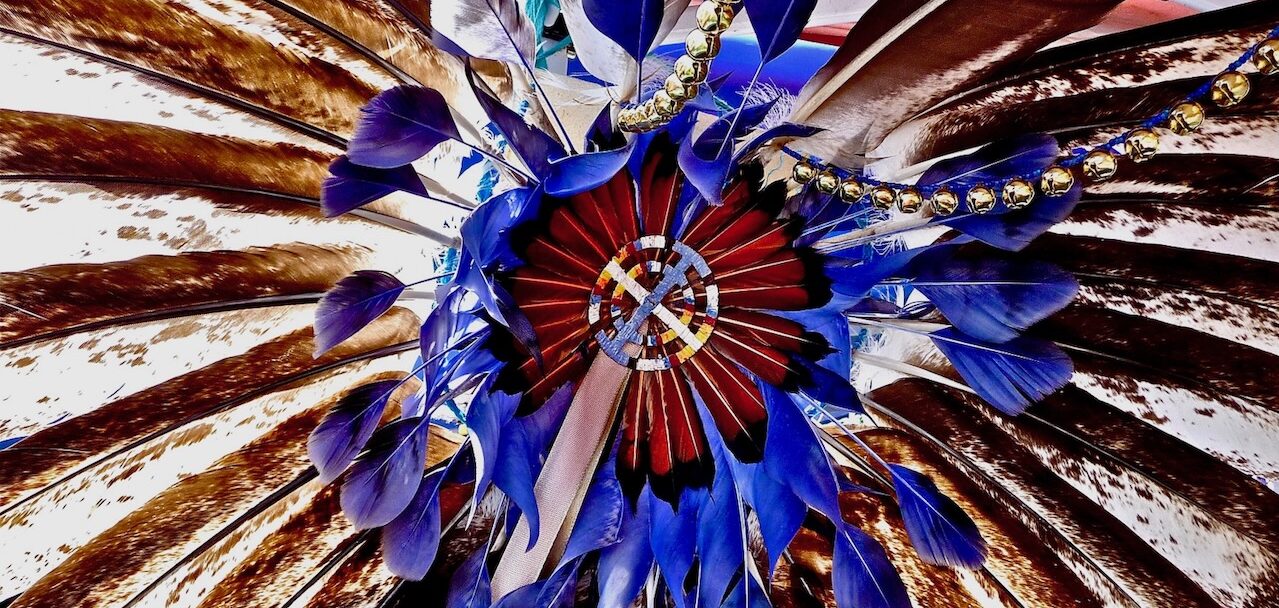The Teton Sioux: Light at the End of the Tunnel.
Book review by Tom Pearson, Thursday, The Guardian Newspaper, Sydney, New South Wales, Australia, 18th February 1987.
The theft of Indian lands in what is now the United States of America is well-known through the film industry – Westerns which show brave settler families, individual white heroes and staunch cavalry fighting off “marauding savages.”
The reality of this bitter resistance to the invasion of their lands by the native peoples of America is far less familiar to Australians. However, it is an epic story which should be told – a story of proud and independent peoples fighting enormous odds to preserve their homelands and way of life from the ravages of colonisation, land theft, murder and discrimination which has many parallels with the 200-year long struggle for land rights and justice by the Aboriginal people.
One of a growing number of books which try to redress the balance and tell the true story of the native Americans’ fight is “The Teton Sioux: Light at the End of the Tunnel” by Andrew Hogarth.
“Light at the End of the Tunnel” chronicles the battles for their land waged by the Sioux and Northern Cheyenne from the middle of the nineteenth century to modern times. Hogarth writes. ‘After the formation of the United States of America in 1776 only the vast expanse of land known as the northern plains of the North West remained untouched. It was an area of incalculable mineral wealth and grazing lands. It was also the beloved homeland of the Teton Sioux and Northern Cheyenne Indians. The start of white expansion into the northern plains marked the beginning of half a century of warfare between the two cultures.
Hogarth tells the grim story of the years between 1851and 1890 during which broken treaties, theft of hunting lands, constant pressure from land and gold hungry settlers, massacres of Indian women and children and forcible incarceration in reserves without adequate food and other supplies forced the Indians to fight for survival.
Hogarth writes: “By the middle of the nineteenth century, the vast area of land occupied by the plains tribes, the Sioux, Cheyenne, Arapaho and a few smaller tribes, had been completely surrounded by land hungry white Europeans.”
“In response to the cry for more land the United States government launched itself into an intensive period of treaty making. Between the years 1853 and 1856 more than 52 treaties were signed.”
“By 1856 the indigenous peoples of America had lost over 174 million acres… Prior to the arrival of Columbus the native peoples were sole owners of 3,026,789 square miles of land. By 1890 Indian holdings were reduced to only a nineteenth of their original homeland – 162,993 square miles.”
Faced with this intolerable position, the Sioux and Northern Cheyenne, like other Indian tribes, had no choice except to fight.
Sitting Bull of the Hunkpapa-Sioux, who with Crazy Horse of the Oglala-Sioux defeated Custer at the Little Bighorn in 1876, said: “What treaty that the white man ever made with us have they kept? Not one.”
“When I was a boy, the Sioux owned the world. The sun rose and set on their land. They sent ten thousand men to battle. Where are the warriors today? Who slew them? Where are our lands? Who own them? What white man can say I ever stole his land or a penny of his money? Yet they say I am a thief.”
“What white woman, however lonely, was a captive or insulted by me? Yet they said I am a bad Indian. What white man has ever seen me drunk? Who has ever come to me hungry and unfed? Who has ever seen me beat my wives or abuse my children? What law have I broken? Is it wrong for me to love my own? Is it wicked for me because my skin is red? Or because I am Sioux? Or because I was born where my father lived? I would die for my people and my country.”
The Indians were finally defeated and dispossessed. Like the Aboriginal people, they were forced onto reserves, discriminated against and impoverished, over-administered by insensitive and sometimes dishonest bureaucrats, pressured by monopolies hungry for their remaining land. Nevertheless they survived, maintained at least some of their culture and today have a militant movement for their rights.
“Light at the End of the Tunnel” contains an account of the Sioux today, including the development of the American Indian Movement (AIM) and the decision of the Pine Ridge Sioux to bring their plight to the attention of the American people which led to the occupation of Wounded Knee in 1973.
A fascinating contribution to the book by Jack Little, a Oglala-Brule-Sioux born in 1920 on the Rosebud Reservation in South Dakota, deals with Sioux religion and culture and his personal experiences over 65 years.
Some of Jack Little’s statements illustrate the similarities between native American and Aboriginal attitudes to land. He says: “we lived in harmony with not only the land but everything around us for centuries. Everything was a relative and as a relative was treated with love and respect…
“The assumption that this land can be owned is made only by the white man in his greed. Indian people have always felt that the land cannot be owned. We are not the only peoples on this land and when it is sold, the rights of the four-legged and winged people, the rivers, trees and even the mountains are taken away. We don’t have the right to do that. The land is our Mother. We belong to the land, it does not belong to us.”
Andrew Hogarth’s book is highly recommended. “Light at the End of the Tunnel” is partisan, informative, highly readable and well illustrated with many of Hogarth’s own photographs as well as historical pictures.


Leave a Comment
You must be logged in to post a comment.